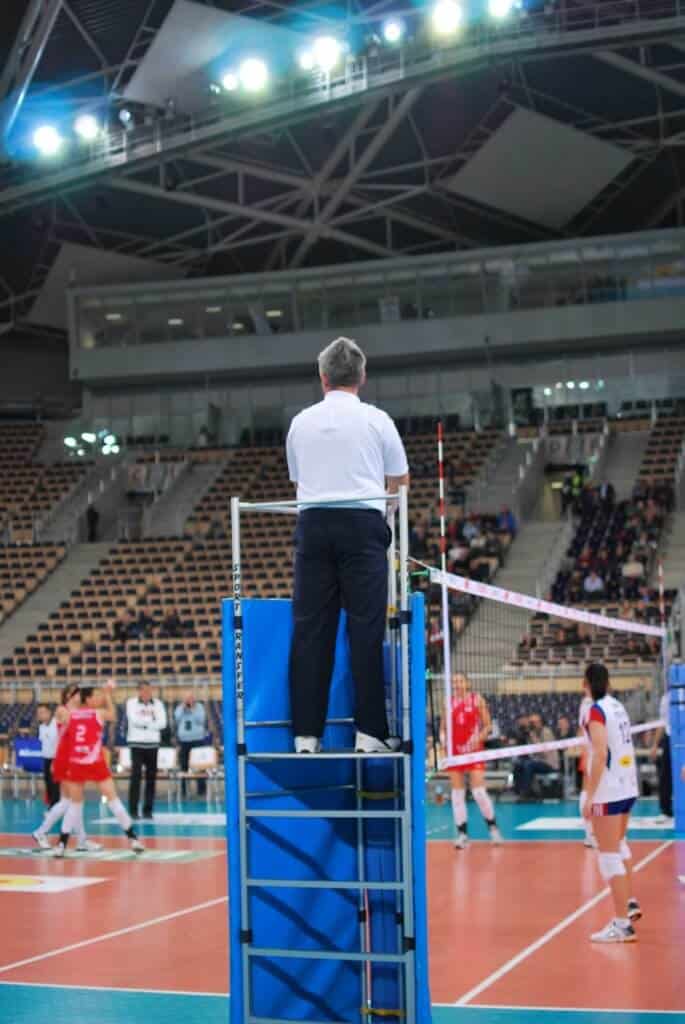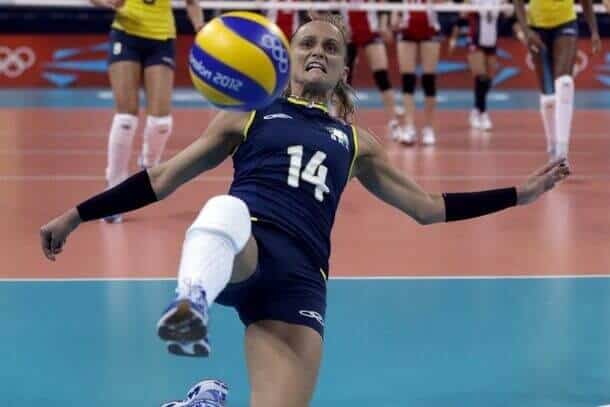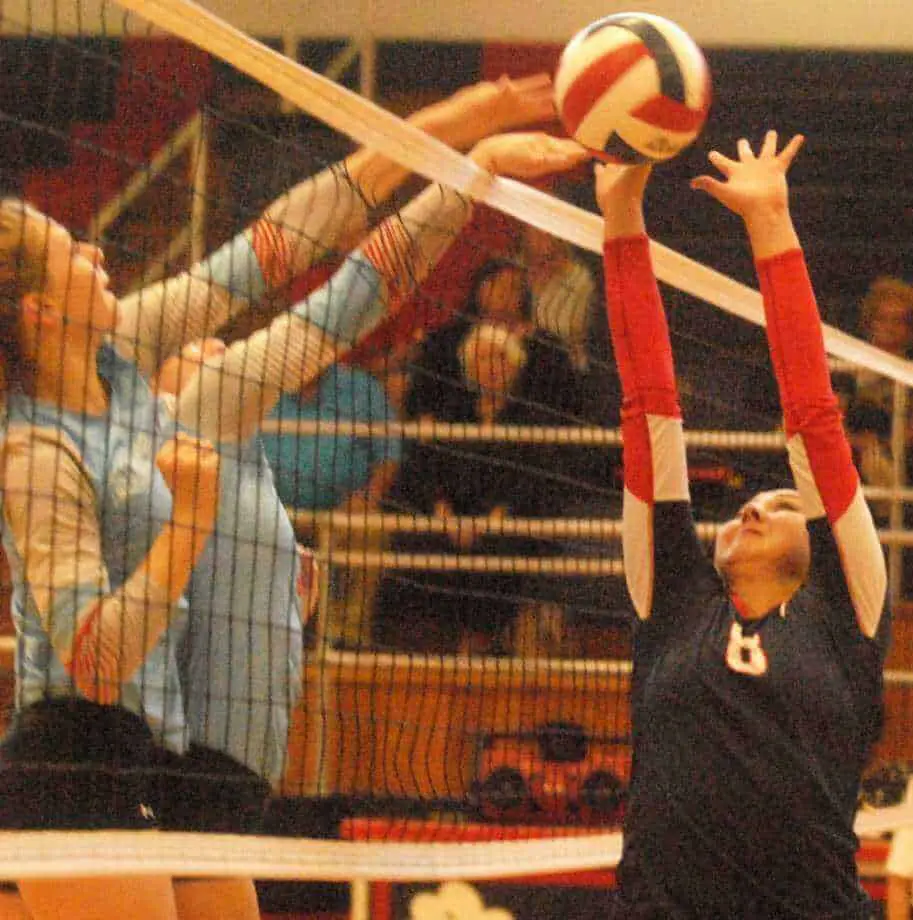Volleyball can be a complicated gate and some of the rules continue to divide even the most experienced players.
In this article I am hoping to shed some light on some of the most challenging questions thrown around volleyball.

Table of Contents
Can you use your feet in Volleyball?
So the short answer to this question is yes, in both indoor and beach volleyball you are allowed to use your feet.

In fact you can actually use any body part you like to hit or contact the ball.
The only exception to this rule would be in beach volleyball you can not use your finger tips to perform what is known in indoor volleyball as a tip.
As to why this is so commonly asked I can’t be sure, I believe it will have something to do with the use of feet never being taught because your arms is far more effective and offers much better levels of control.
The other reason I feel this question is asked a lot is because, I know that some lower leagues (recreational leagues) do not allow feet to be used to prevent beginners from wildly swinging their feet at the ball, potentially causing someone else injury who may be diving to dig the ball.
What are the rules regarding hand setting.
Let me bust one myth instantly, there is absolutely no rule in beach volleyball that says you can’t handset and there certainly isn’t any rule regarding the ball spinning when it leaves your hands.
Now let me explain why it is commonly perceived that the ball shouldn’t spin when hand setting.
You were probably told when first learning to play beach volleyball that the ball can’t spin when hand setting.
Now the reason for this is because referees will look at spinning as an indication of a double touch, however just because it is can be an indication of a double touch, it absolutely doesn’t mean that it is 100% a double touch.
When you are playing in higher level tournaments with official referees they will be looking a lot more at your setting action and hands rather than whether the ball is spinning.
For the exact ruling please see below extract taken from the official FIVB rule book.
These are the only things noted throughout the entire rule book regarding setting.

Can you set directly over the net in beach volleyball?
Again the short answer to this question is absolutely you can.
There is a common misconception in volleyball that a set can only be the second touch in a succession of touches for one team and that you can only set the ball to your team mate for a spike.
However in beach volleyball you are to set both the first and third touch.
Now touching on to setting directly over the net. This is completely legal providing you set directly in line with your shoulders.
This means you can set straight over the net either forwards or backwards as long as the ball leaves directly in line with your shoulders.
Can you cross the centre line in indoor volleyball?
Now this rule is a little more difficult to explain. Whilst you are not able to cross the centre line you are allowed to do what is known as saddling.
Saddling means sections of your foot may cross the line as long as some section of foot remains on the line.
It is always advised that you should not step or cross the line to ensure your team or opponents are not at risk of landing on your foot or ankle causing injury.
Can you save the ball from your opponent’s side in volleyball?
Now to clarify exactly what I mean by this I will give an example.
We have all been in that situation where the opponent team spike a ball and your partner or team mate shanks the pass.
You see the ball landing on your opponent’s side but you know it’s not going to land in the court.
So what do you do can you chase down the ball and bring it back in play on your own side or the dream over?
Well depending on whether or not you are playing beach volleyball or indoor volleyball this answer will differ slightly.
However two things that are the same in both variations of the sport is if the ball goes over to the oppositions side between the ariels then you can not chase down the ball. The second thing that is shared is you can intervene or contact any opposition players.
Now onto the differences.
If the ball gets shanked or miss-passed on to your oppositions side but the ball goes round the aerial in beach volleyball you are allowed to run under the net in any location and you are allowed to hit the ball back on your side.
However when you hit the ball back it must again come round the aerials and not between them.
In indoor the same rule applies in that you can run under the net and play the ball back to your side as long as the ball goes round the aerial. However in Indoor Volleyball you will remember from the above that you are not allowed to cross the centre line.
With this in mind in order to chase down the ball the player must run outside of the aerials or round the post. The player can not run under the net between or under the aerials.
For more clarity on the rule regarding Indoor you can see some great examples in the below video.
Can you Block a Serve?
It actually surprises me how often this question gets asked.
Not because it is a stupid question, more because I find it compelling at how many people like to think of different ways of winning points in volleyball and lets be honest we have all thought about just jumping and blocking the serve when someone drops a short serve just above the height of the net.
But alas I have some bad news for you.
It is illegal to block or even attack the ball directly off of a serve.
Now the official ruling taken directly from the rule book is somewhat, actually no it is extremely dry but it is straight to the point and concise.
Can you touch the net?
You may have been told that at no point can you touch the net in either beach volleyball or indoor volleyball.
Well I am here to clear up that myth.
Whilst it is illegal to contact the net if it interferes with play, it is not illegal to touch the net (inside or outside the aerials), the supporting ropes or the posts.
The official ruling states that contact with the net between the aerials during the action of playing the ball is a fault.
They define during an action as blocking, hitting or simply having the intent to play or contact the ball.
What this means is you can legally touch the posts, supporting ropes and the net both inside and outside of the antenna’s as long as it doesn’t interfere with play or give one side an unfair advantage.
An example of a legal net touch could be a player trying to step out of the setters path and brushing against the net.
If however the player stepped out of the setter’s net and made the net drop in the process thus giving their team an advantage to hit over a lower net, this would be considered a net violation.
For the official ruling see below.
Can You Reach Over the Net In Volleyball?

You may have heard the term reaching over or you may have seen the referee call a reaching over foul.
But you may be confused by this as you see blockers reaching over the net all the time and no call is given?
Well in volleyball if a team has not used all three of their touches you are not allowed to impede on your opponent’s side.
However if your opposition has used all three touches you can reach over the net, block the ball or even spike if the opportunity arises
Does The Block Count as a Touch In Volleyball?
So this rule is an interesting.
In Indoor volleyball the ruling is much more clear, the rule indoors is the block does not count as a touch for your team.
This means if you block the ball you are able to contact it again yourself or your team still has all 3 touches available.
However in Beach volleyball although it doesn’t count as a touch for you as an individual it does count towards your 3 touches as a team.
So if in beach volleyball you touch the ball make sure you call it out for your team mate so they can either set you back or if you take the first pass know to hit the ball straight over and not set you.


